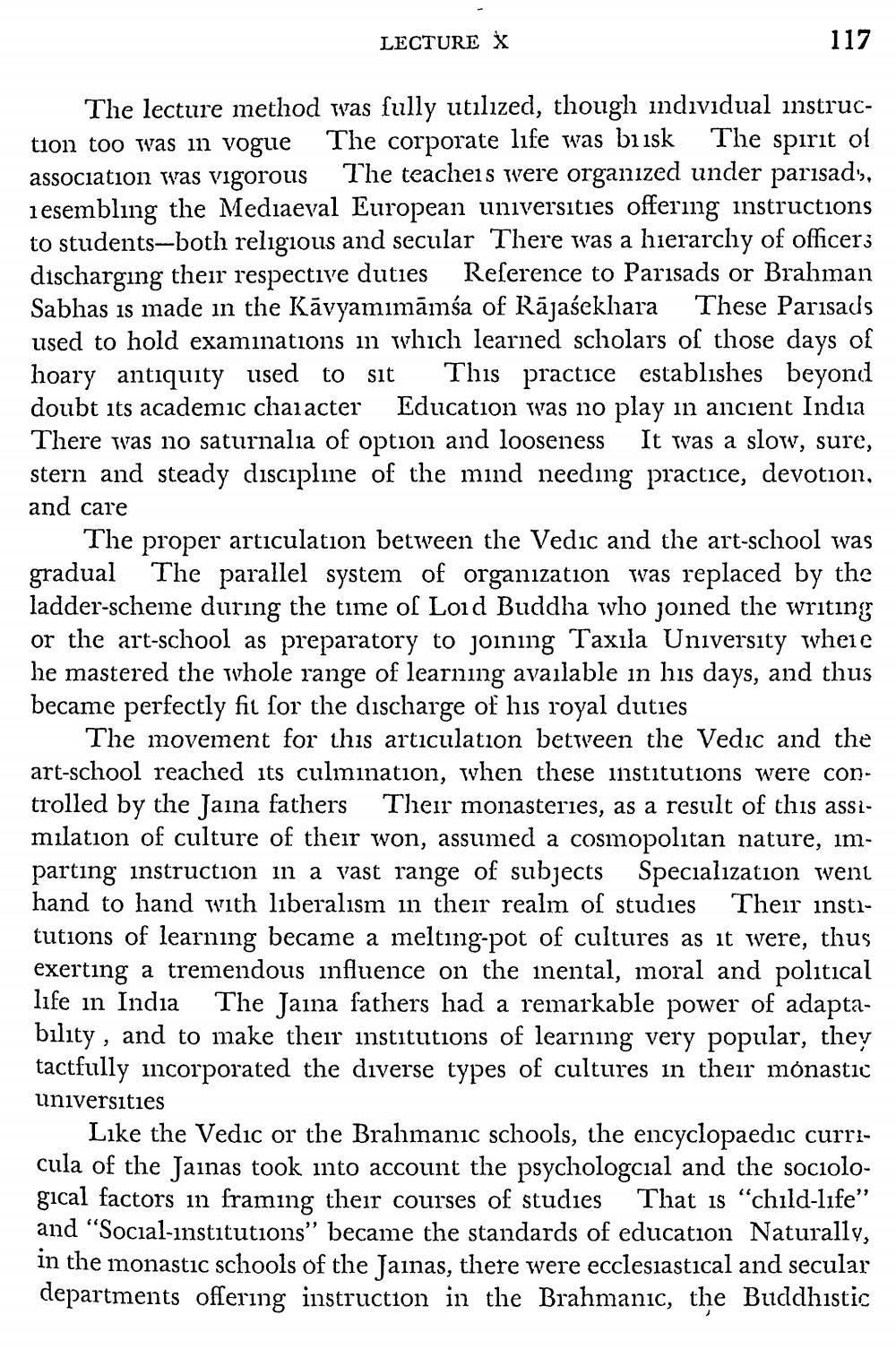________________
LECTURE X
117
The lecture method was fully utilized, though individual instruction too was in vogue The corporate life was buisk The spirit of association was vigorous The teachers were organized under parisad's, iesembling the Mediaeval European universities offering instructions to students-both religious and secular There was a hierarchy of officers discharging their respective duties Reference to Parisads or Brahman Sabhas is made in the Kāvyamımāmía of Rājasekhara These Parisads used to hold examinations in which learned scholars of those days of hoary antiquity used to sit This practice establishes beyond doubt its academic character Education was no play in ancient India There was no saturnalia of option and looseness It was a slow, sure, stern and steady discipline of the mind needing practice, devotion, and care
The proper articulation between the Vedic and the art-school was gradual The parallel system of organization was replaced by the ladder-scheme during the time of Loid Buddha who joined the writing or the art-school as preparatory to joining Taxıla University where he mastered the whole range of learning available in his days, and thus became perfectly fit for the discharge of his royal duties
The movement for this articulation between the Vedic and the art-school reached its culmination, when these institutions were controlled by the Jaina fathers Their monasteries, as a result of this assimilation of culture of their won, assumed a cosmopolitan nature, imparting instruction in a vast range of subjects Specialization went hand to hand with liberalism in their realm of studies Their institutions of learning became a melting-pot of cultures as it were, thus exerting a tremendous influence on the inental, moral and political life in India The Jaina fathers had a remarkable power of adaptability, and to make their institutions of learning very popular, they tactfully incorporated the diverse types of cultures in their monastic universities
Like the Vedic or the Brahmanic schools, the encyclopaedic curricula of the Jainas took into account the psychologcial and the sociological factors in framing their courses of studies That is "child-life" and “Social-institutions” became the standards of education Naturally, in the monastic schools of the Jainas, there were ecclesiastical and secular departments offering instruction in the Brahmanic, the Buddhistic




